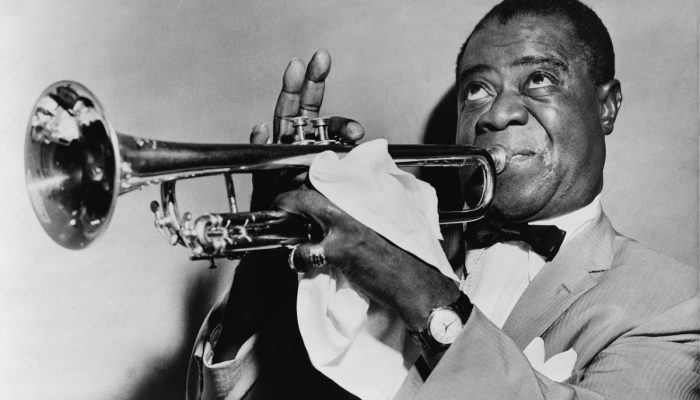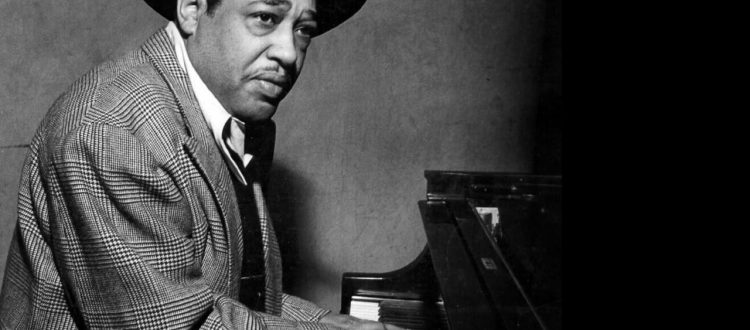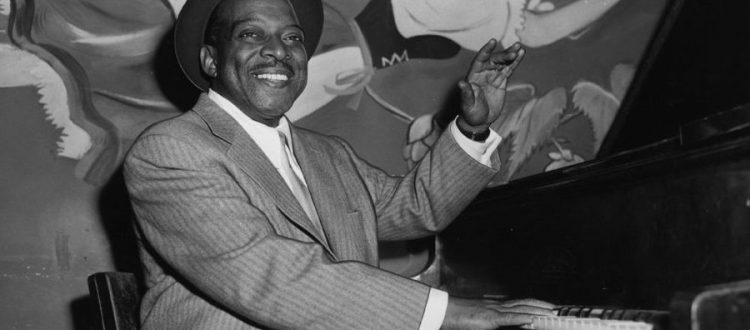by Dan Quigley – Head of School at JMI
In order to understand what “Jazz Language” is we need to listen to lots of jazz music. If Jazz is different to other styles of music, what makes it different? Many believe that improvisation is Jazz, as if to say that improvisation isn’t in other styles of music. In the early learning stages of jazz, students usually hear the words “jazz language” and that they need to learn about it in order to play jazz. There is lots of information on jazz language that can be found in books, videos, YouTube links you name it and many of these instructions deal with notes and rhythms. However after many years I have come to believe that the difference between jazz and other styles of music is through the articulation of music.
Let’s talk about music and some music fundamentals for a bit. Before all the highly intelligent musicians reading this launch at the following information, let’s keep in mind the overall topic of conversation here “Jazz Language”. While my efforts in this blog are to explain what “jazz language” is, the aim is to open peoples’ thoughts and conversation on what jazz language is in order for more people to engage in the music.
Now that’s out of the way, let’s quickly look at music fundamentals in Western music regardless of style. There are 4 main elements Melody, Harmony, Rhythm and Orchestration. The first 3 are quite self-explanatory, however the last one, “Orchestration”, includes tone, timbre, dynamics, instrumentation, articulation and many others. In Western music (which includes jazz) there are a limited amount of notes (12 to be exact) and a limited amount of rhythms (some sources believe up to 7 rhythms, some say up to 9). These notes put in various combinations with the different rhythms gives us an infinite amount of songs/tunes, concerto’s, fuges, jingles and the list goes on that we have, regardless of style.

There is a system of articulation that includes staccato, tenuto, accents plus many more that are used for expression on any given note and/or rhythm. All of these fall under the “Orchestration” element of music.
Now let’s look at musical Syntax. How music flows. When listening to music regardless of style we can almost predict what is going to happen next, what will be the next note or chord or rhythm. Through listening to music either passively or actively we learn to understand how it flows. Everybody has a slight difference in what they hear and like to hear. However, through ‘voice leading’ and harmony you can lead a listener to what the next note in a composition will be, regardless of style. For example play ‘Twinkle Twinkle Little Star’ and finish on the second last note. You’ll find this feels unfinished as your ear wants to hear the melody finish. If we accept this idea we can now [possibly] deal with Music and not need to define music by genre.
Let’s now look at music history, real quick! In the history of music, “Jazz” came along at a time when European Classical music was in its late “Romantic” period and more so in the “Impressionism” period on the cusp of the Twentieth Century. By this time much had been developed musically. Many of the greatest composers had already written what is considered the “Great” works of our time.
Jazz is an African-American art form. It was born in America. Just like Opera was born in Italy. While I’m sure you already know this, I do feel it’s important to remember this for a variety of reasons. Mainly, because we don’t need to be Italian in order like, understand or perform Opera. Therefore we don’t need to be African-American to like, understand or perform Jazz. I think of it as a gift that has been given to the world. Therefore performing and celebrating Jazz is a celebration of African-American culture.

So, what is it exactly that they did? They didn’t invent any new notes. They didn’t invent new rhythms, they didn’t invent new harmonies. What they did do is use music as a way to express themselves. They added to the “Orchestration” element of music through articulation.
Without going into the reasons of why African-Americans expressed themselves in such a unique way is not to ignore the racial displacement that happened. However, there is not enough time in this blog to explain the depth of history. If you’re keen to learn more about that I’d suggest reading “Stomping the Blues” by Albert Murray and “Blues People” by Amiri Baraka. Both these books give great insight into the synergy between the culture and the music.
When listening to the Duke Ellington Orchestra or Louis Armstrong or any great Jazz artist we hear their expression through articulation. There have been many attempts at notating these articulations through the European Classical notational system, however these “jazz” articulations have evolved from emulating speech so the “classical” approach doesn’t fit as well as it does in classical music.
 As an example, for me when I was studying the classical trumpet repertoire I didn’t need to hear versions of the Haydn Trumpet Concerto in order to perform the music close enough to the way it was intended to be played. If I changed the articulation of a note from staccato to a legato note I would get marked down in my music exams. With jazz, unless you know what the music sounds like, the notated music on the page only gives you part of the information in order to make the music sound the way it is intended to.
As an example, for me when I was studying the classical trumpet repertoire I didn’t need to hear versions of the Haydn Trumpet Concerto in order to perform the music close enough to the way it was intended to be played. If I changed the articulation of a note from staccato to a legato note I would get marked down in my music exams. With jazz, unless you know what the music sounds like, the notated music on the page only gives you part of the information in order to make the music sound the way it is intended to.
I take a few music classes and workshops in schools throughout Brisbane and many times the teachers are after someone to teach jazz to their students and they generally want this done in one workshop. I sometimes get the feeling that the teacher secretly believe “It’s not that hard you just make it up right?” I don’t see this as a complete fault of the teacher, more so it’s a lack of understanding and or experience. A lot of the time they want a workshop on Improvisation, as a belief that improvisation is what jazz is. As a result I end up spending more time working on music fundamentals including Scales, Chords, Arpeggios and rhythm in order to show students the necessary musical tools to improvise, to create music instantly. I can’t count the amount of times I’ve come across teachers who show their students “the blues” scale and ask students to use those notes over a 12 bar blues and you will sound more “jazzy”. This approach is not helpful for 2 main reasons, it’s not showing the student the basic fundamentals of harmony and it’s not showing them the articulation required. The student then believes that they don’t need to learn the harmony (chord progression) as they have these “bluesy” notes that sound cool. The only positive that I see in this is that it may ignite interest for particular students to get into jazz and if it does then the learning of music fundamentals and jazz language become essential.
While Jazz uses more improvisation than most other genres do (except of course “Improvised Music”) the level of improvisation is used as a way to communicate to each other and to the audience. We have a musical conversation. This is where the musical knowledge of Melody (notes), Harmony (chords/arpeggios), Rhythm and Orchestration are vital to know.

If we relate this to language in speech, it is similar to the need to know and understand the alphabet, grammar, punctuation and phonology. If we think about this for a bit, as an English speaking person I don’t have difficulty expressing myself through the many rules that govern our language. And nobody has invented a new letter to the alphabet in order to create new words. New words are created within the alphabet system. If we mix words up within a sentence in speech or in written form it doesn’t make sense and you’ll either correct yourself or be corrected. Millions and millions of books have been written and will continue to be written using our “English language” system. The ideas in these books are not the same, however the letters, words, grammar, punctuation used are the same. Another consideration here is that with written words there are no inflections or expression written into a sentence. You need to know how to use expression by hearing it. You can read any sentence in a variety of different English speaking accents including American, Scottish, Irish, Northern England, Southern England or Australian etc. and the letters and words don’t change. There are very few authors that use a more of a phonetic system of writing so that you read with the accent of expression from that country. Irvine Welsh is one that comes to mind.
So what is Jazz Language?
As I mentioned earlier it is Articulation. You can hear this in the articulation verses the notation of all of the Great Jazz innovators. Let’s start with Duke Ellington’s “Black and Tan Fantasy”. We hear the trumpet and trombone using a plunger mute with a straight mute. Below is the melody that gets played by Bubber Miley on the trumpet (in the key the trumpet plays it in).
Example (A)
![]()
When you listen to the recording and look at the notation you see straight away that there is something missing, articulation.
Here in example (B) I’ve used the general western music articulation system. By looking at this you will get closer to the sounds that Bubber Miley uses. However, if you were to look at this without hearing the recording and not understand what jazz sounds like you probably won’t get too close to the original.

Here in example (C) I’ve used phonetic sounds to create the sounds that Bubber Miley uses.

I believe example (C) gets us closer to the articulation that is employed by Bubber Miley as well as a simpler approach. In particular in the 3rd bar where there is a bend on the note. When you say “doo-u-wee” there is a natural bend on the “u”.
If you listen to Louis Armstrong’s Hot Seven’s recording of ‘Hotter than that’ from the Okeh recording of 1927, halfway through the track Louis Armstrong starts singing without words. This is called “scat” singing. In this recording you hear Louis Armstrong use many different phonetic sounds on the same note as well as different notes. This is a great display of the different phonetic articulations.
The great trumpeter and educator Clark Terry recorded a great example of the connection of vocalization and articulation on his track ‘Mumbles’. I warn you that this will also most likely make you smile.
Lastly, let’s listen to one of Count Basie’s biggest hits ‘Splanky’. Here we get to hear a Jazz Orchestra playing with the same articulation within the sections themselves. The first 2 notes of the melody that get played after the intro are 8th notes however they’re articulated in by using “doo-duht”. There are multiple stories of people who joined the Count Basie Orchestra and it took them a few gigs to get used to reading the notes and needing to listen to the players around them in order to get the articulation correct.
If you’re a teacher reading this and take the Jazz Band, Big Band, Stage Band, Jazz Orchestra within your school program and you want to get your musicians to swing more as well as keeping the section/s tight within the band try using this phonetic system. Get your students to write the phonetic sound above the notes.

All of the information is in the music itself. You’ll need to listen a lot to get the phonetics you hear accurate enough to pass on to your students. It’s advisable that your students listen to the music as well. This can be done within the band rehearsal or by sending them links to the music. If you do it without them listening to the recording, and if they’re articulating accurately to what you’ve phonetically asked them to do, I’m sure they’ll get closer to sounding like a professional band and or the recording.
Ultimately to gain a better understanding of “jazz language” I feel it is important to listen to jazz that was created by the early pioneers of the music including (and not excluded the hundreds of other names that need to be on this list) Louis Armstrong, Duke Ellington, Ella Fitzgerald, Count Basie, Coleman Hawkins, Lester Young, Dizzy Gillespie etc- and vocalise the way in which they articulate the music. You’ll come up with some funny words like “doo-dah” for two quavers (eighth notes) together, or “doo-dit-duht” for a quaver (eighth note) followed by a crotchet (quarte note) followed by another quaver, or “doo-dl-la” for a triplet.
I hope you’ve enjoyed reading this blog. If you want more information about this you can contact me at Jazz Music Institute where we run music courses and classes in Brisbane. I also encourage you to check out the amazing work that is being done by Jazz at Lincoln Centre under the direction of Wynton Marsalis. There are heaps of YouTube links they have of the Jazz Academy and Essentially Ellington competition, you’ll hear high school aged students sounding incredible. This information is part of the education that Jazz at Lincoln Centre and Wynton Marsalis have been doing for over 20 years now.
JMI is the only music school in Brisbane that delivers courses and classes specialising in jazz performance for musicians of all ages and abilities.
